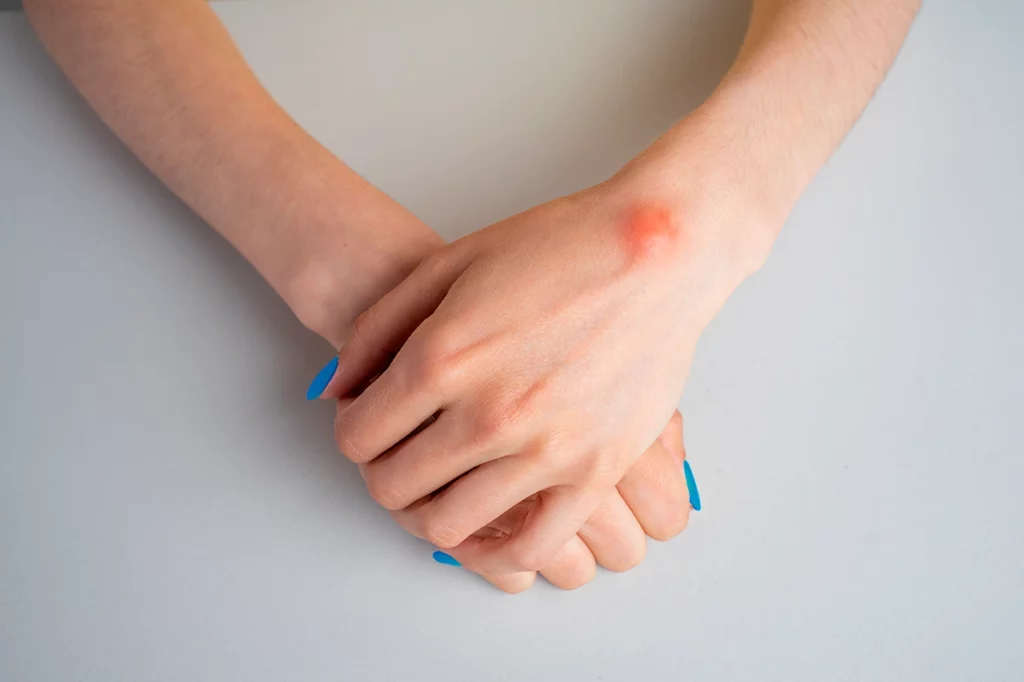A cyst is a closed formation that contains fluid, air, or other semi-solid material and can develop in various parts of the body, such as the skin, internal organs, bones, or even deep structures within the body.
Generally, cysts are benign, but their appearance can cause concern, discomfort, or even pain, depending on their size and location.
Why cysts form
There are various causes for why cysts form, ranging from physiological processes to pathological conditions. The most common include:
- Gland obstruction: many glands in the body produce secretions that can become trapped due to a blockage, leading to fluid accumulation and, consequently, the formation of a cyst.
- Infections: some bacterial, viral, or parasitic infections can trigger the formation of an inflammatory cyst; in this case, the cyst is the body’s response to encapsulate and isolate the infectious agent.
- Abnormal embryonic development: some cysts form during fetal development due to alterations in cellular differentiation, such as Gartner duct cysts or branchial cleft cysts.
- Trauma: certain injuries that cause fluid accumulation or tissue inflammation may result in the development of cysts, especially in areas like joints or soft tissues.
- Genetic conditions: hereditary diseases like polycystic kidney disease predispose individuals to the formation of cysts in affected organs.
- Hormonal imbalance: in the case of ovarian cysts, hormonal changes can interfere with the normal ovulation process, resulting in functional cysts.
Symptoms of cysts
Cyst symptoms can vary widely depending on their size, location, and nature. Some cysts may be asymptomatic and are discovered incidentally during imaging studies for other conditions.
If symptoms are present, the most common include:
- Pain: large cysts or those located near sensitive structures such as nerves or joints can cause constant or intermittent pain.
- Swelling or lump: on the skin or superficial tissues, cysts often appear as visible or palpable lumps.
- Functional changes: cysts in internal organs such as the kidneys, liver, or ovaries may interfere with their normal function, causing symptoms like difficulty urinating, abdominal discomfort, or menstrual irregularities.
- Infection: if a cyst becomes infected, it may cause redness, localized warmth, tenderness, or fever.
- Compression of nearby structures: in cases such as brain or spinal cysts, compression can lead to neurological symptoms like headache, weakness, or sensory disturbances.
Types of cysts
There are various types of cysts classified based on their cause, content, and location.
Some of the most common are:
- Cutaneous cysts: divided into sebaceous cysts, which form from the accumulation of fat and keratin in hair follicles, and epidermoid cysts, which contain keratin and are located on the face, neck, and back.
- Ovarian cysts: subdivided into functional cysts associated with the menstrual cycle and dermoid cysts that contain tissues such as hair, teeth, or fat.
- Breast cysts: common in women and associated with hormonal changes or benign conditions like fibrocystic breast disease.
- Renal cysts: simple cysts are fluid-filled sacs that typically appear in older adults; polycystic kidney disease is a genetic condition that results in numerous cysts affecting kidney function.
- Ganglion cysts: form near joints or tendons, usually in the wrists or hands.
- Brain cysts: arachnoid cysts are located in the membranes covering the brain and may cause symptoms like headaches or seizures; pineal cysts are often asymptomatic but may cause visual disturbances and headaches.
- Thyroid cysts: formations in the thyroid gland that may be associated with thyroid nodules.
- Dental cysts: appear in the gums or jawbone as a result of infections or untreated cavities.
- Liver cysts: may be simple or related to parasitic infections such as echinococcosis.
- Baker’s cysts: located at the back of the knee, associated with joint problems like arthritis or meniscal injuries.
Depending on the specific factors of each cyst, the type of treatment will vary. Some only require observation to ensure they do not grow or become complicated. Others may require drainage, surgical treatment, medication, or hormonal therapies.
Although a cyst is a common and generally benign clinical entity, it can still cause discomfort or lead to more serious complications. Proper evaluation and medical follow-up are necessary to determine the appropriate treatment.
At the ABC Medical Center’s Internal Medicine Department, we can provide you with specialized care. Contact us
Fuentes
MedlinePlus, UHealth, MSD Manuals



